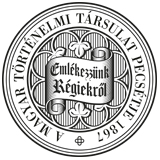Századok – 1995
Tanulmányok - Balogh Sándor: Erdély és a második világháború utáni békerendezés (1945–1946) III/535
572 BALOGH SÁNDOR TRANSYLVANIA AND THE PEACE TREATIES AFTER WORLD WAR II, 1945-46 by Balogh Sándor (Summary) The study analyzes the period between the Rumanian armistice agreement of 12 September; 1944 and the joint statement of the Hungarian and Rumanian territorial commissions of the Paris peace conference on 5 September, 1946 deciding the fate of Transylvania. The Rumanian administration and and gendarmerie returning to Transylvania were followed by the so-called Maniu Guards committing terrible crimes against the Hungarian population. On 12 November, 1944 the Allied Control Commission in Rumania ordered the Rumanian authorities to leave Northern-Transylvania and introduced Soviet military administration instead remaining in office till the establishment of the Groza government on 6 March, 1945. The Groza government promised to observe the human and civil rights of the Hungarian population and practical steps were also taken, particularly in the cultural field. In other fields, however, most problems remained unsolved. For example, the fate of the nearly 100 000 innocent Hungarians interned earlier was not settled even as late as the spring of 1946. Some 250-300 000 Hungarians were denied citizenship involving not only financial problems for these people but also the threat of being driven away from their homeland. The Hungarian minority had to face serious disadvantages also in economic life, in administration and before the law. When preparing for the peace talks the Hungarian government was very moderate in establishing its demands for Rumanian territories. It namely reclaimed a mere 22 000 square kilometres of the 104 000 square kilometres ceded to Rumanian under the Trianon Peace Treaty of 1920, thought the rate of the Hungarian population in the diannexed territoires was at least 30 per cent. Since the majority of the Hungarian minority lived in Eastern Transylvania, the Hungarian government asked for the application of the principle of reciprocity in nationality matters. The Hungarian requests were not at all supported by the Soviet Union. This was the primary cause of the rumanian government's refusal to consider the problems in bilateral talks. In the spring of 1946 Great Britain and the United States also dismissed the Hungarian cause they had originally supported. As a consequence, on 7 May, 1946 the Council of Foreign Ministers decided for the restoration of the Hungarian-Rumanian frontier as valid on 31 December, 1937. The prospects of more favourable peace terms were not improved by the visit of the Hungarian government delegation in Washington, London and Paris in June, 1946, either. On the contrary, the Rumanian government put in so heavy claims on Hungarian territories at the peace conference that even the Allied Great Powers found them highly exaggerated. The peace conference finally restored the Trianon borders of Hungary and Rumania, and to make matters worse, it delivered the Hungarian minority nearly fully into the hands of the ruling Rumanian nation and its state.
